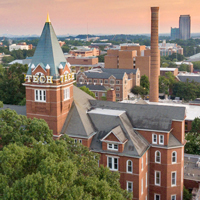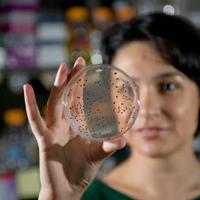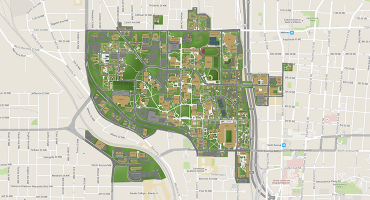College of Sciences

The College of Sciences at Georgia Tech cultivates curiosity, encourages exploration, and fosters innovation to develop leaders and scientific solutions for a better world. Discover more.
Experts In The News
Five years after the "murder hornet” (Vespa mandarinia,) was first spotted in Washington state, the U.S. has declared the invasive species eradicated.
In an article published in Futurity, Georgia Tech School of Biological Sciences Professor Mike Goodisman explained that eradicating the “murder hornet” will help the U.S. avoid a potential agricultural and commercial disaster due to the murder hornet’s threat to the already-declining honeybee population.
“A threat to the honeybee population would be a commercial disaster,” Goodisman says. “Honeybees are critical in agriculture for pollinating a great variety of the foods we eat, and if we don’t have these pollinators, then we wouldn’t have many of the foods—fruits especially—that we are used to.”
The eradication of the hornet is a significant achievement, but Goodisman says it’s not a foregone conclusion that they will not re-emerge. Murder hornets can hibernate in various materials, cargo ships, and other commercial transportation, which can unknowingly spread invasive species worldwide.
Futurity January 3, 2025Georgia Tech researchers from the School of Chemistry and Biochemistry, the School of Earth and Atmospheric Sciences, and the School of Physics including Regents' Professor Thomas Orlando, Assistant Professor Karl Lang, and post-doctoral researcher Micah Schaible are among the authors of a paper recently published in Scientific Reports.
Researchers from the University of Georgia and Georgia Tech demonstrated that space weathering alterations of the surface of lunar samples at the nanoscale may provide a mechanism to distinguish lunar samples of variable surface exposure age.
Nature Scientific Reports January 2, 2025Researchers at Georgia Tech including James Stroud, assistant professor in the School of Biological Sciences were conducting a study of Cuban brown anoles (Anolis sagrei) at Fairchild Tropical Botanic Garden in Florida when suddenly, a new species appeared on the scene: the Puerto Rican crested anole (Anolis cristatellus).
The subsequent Georgia Tech-led study of the two species and how they adapted to fill different roles, provides some of the clearest evidence to date of evolution in action.
“When two similar species compete for the same resources, like food and territory, they often evolve differences that allow them to coexist,” says Stroud, lead author of the study. "Most of what we know about how animals change in response to this process comes from studying patterns that evolved long ago. This was a rare opportunity where we could watch evolution as it happened.”
New Atlas January 2, 2025










